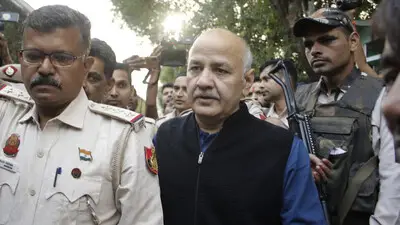Recommended Stories
Bhubaneswar: The development of Lithium-ion battery helped three scientists-- John B. Goodenough, M. Stanley Whittingham and Akira Yoshino—win the 2019 Nobel Prize for Chemistry but it is interesting to note that the revolutionary invention has a close connection with a nondescript village in Odisha.
Maligaon village in Thuamul Rampur block of Kalahandi district bears testimony to the exemplary success the practical application of the lithium-ion batteries has had on the lives of hundreds of residents in the village even much before the concept became a matter of worldwide fame.
It is only due to lithium-ion battery technology, the village which once languished in the darkness despite so many decades after Indian independence with its location around 140 KM away from the district headquarters now gets 24 x 7 electricity supply.
According to sources, Gram Vikas, a non-governmental organisation set up a solar project and installed a solar micro-grid to conserve the power in the village in 2009. Five years later, the organisation adopted tubular lead-acid battery technology for conservation of electricity and successfully supplied it to 46 households in Maligaon. However, due to high maintenance of lead-acid batteries, the voluntary organisation thought to replace it with lithium-ion batteries and succeeded in it.
A report published in Village Square states that in 2018 Eshaan Patheria, a young Harvard University graduate came to volunteer in the power project for the project thanks to Youth for India Fellowship of the SBI Foundation. With the help of his technical knowledge and extensive research, Patheria advised the NGO to use lithium-ion batteries for revival of the system, as these were more efficient, required less maintenance and had much longer life than other alternatives.
Since last September, lithium-ion batteries have been used to conserve around 14 kilowatt of energy which are used for various purposes like lighting. Not only that the local villagers have become so self-reliant that many of them even are now having TV sets and fans.
The founder of the NGO, Joe Madiath says that during the initial stages of the project application, the organisation was in regular touch with the scientists who won this year's Nobel in Chemistry.
“Earlier, we used distil water in the batteries. Now, we don’t need that in lithium-ion batteries,” said solar supervisor, Sanjay Kumar Baral.
Hailing the new technology as a boon for their village, a local resident said, "Earlier, our village did not have electricity and we used to depend on kerosene lamps. The children in the village had to face difficulties in their study but now everything has changed."
Another interesting Odisha connection with the lithium ferro-phosphate (LFP) batteries is that first scientific paper about their use was authored by scientist from Odisha Akshaya K. Padhi and jointly with K.S. Nanjundaswamy and Goodenough who won this year's Nobel prize.
It may be noted that Lithium-ion batteries are used in everything from laptops and smartphones to Elon Musk’s Tesla vehicles and are rechargeable and play an incredibly important role in modern society. However, preserving electricity in a solar grid with the lithium-ion batteries is first of its kind in Odisha.













